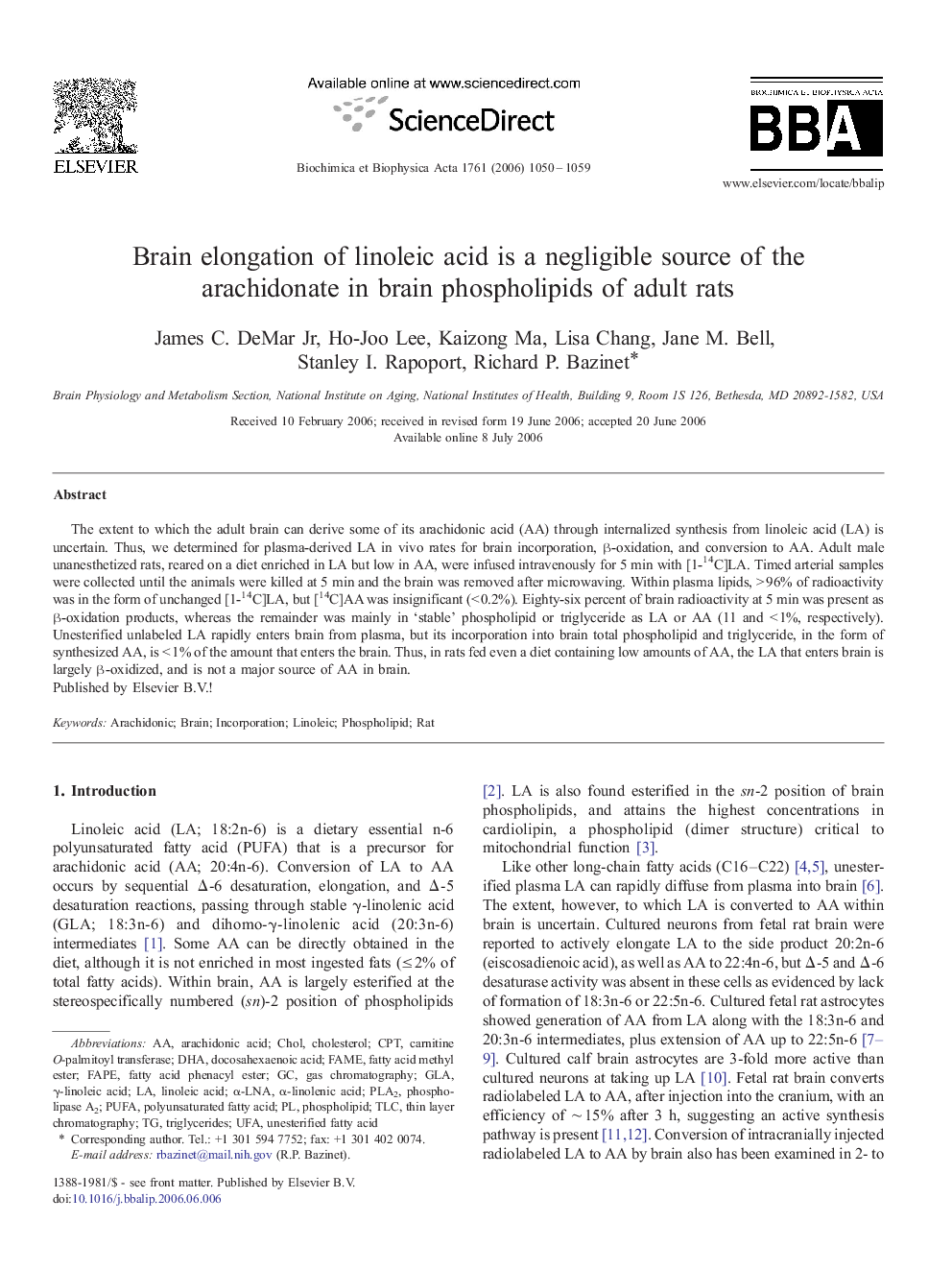| Article ID | Journal | Published Year | Pages | File Type |
|---|---|---|---|---|
| 1950274 | Biochimica et Biophysica Acta (BBA) - Molecular and Cell Biology of Lipids | 2006 | 10 Pages |
The extent to which the adult brain can derive some of its arachidonic acid (AA) through internalized synthesis from linoleic acid (LA) is uncertain. Thus, we determined for plasma-derived LA in vivo rates for brain incorporation, β-oxidation, and conversion to AA. Adult male unanesthetized rats, reared on a diet enriched in LA but low in AA, were infused intravenously for 5 min with [1-14C]LA. Timed arterial samples were collected until the animals were killed at 5 min and the brain was removed after microwaving. Within plasma lipids, > 96% of radioactivity was in the form of unchanged [1-14C]LA, but [14C]AA was insignificant (< 0.2%). Eighty-six percent of brain radioactivity at 5 min was present as β-oxidation products, whereas the remainder was mainly in ‘stable’ phospholipid or triglyceride as LA or AA (11 and < 1%, respectively). Unesterified unlabeled LA rapidly enters brain from plasma, but its incorporation into brain total phospholipid and triglyceride, in the form of synthesized AA, is < 1% of the amount that enters the brain. Thus, in rats fed even a diet containing low amounts of AA, the LA that enters brain is largely β-oxidized, and is not a major source of AA in brain.
